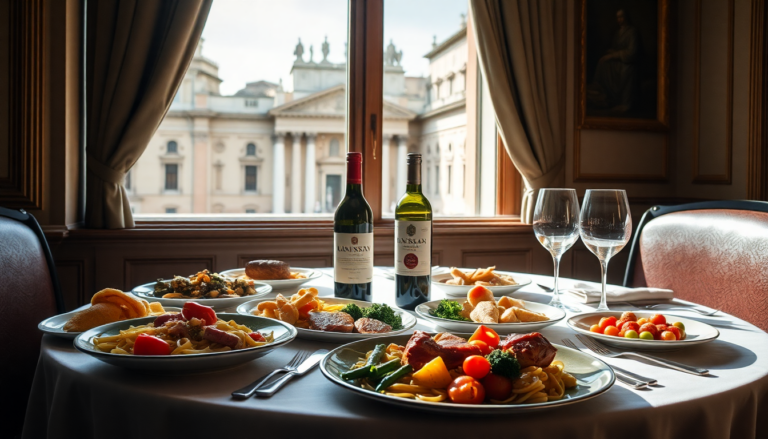Argomenti trattati
The culinary traditions of the papal conclave
For over 750 years, the papal conclave has operated under a veil of secrecy, including strict regulations on what cardinals can consume. This unique culinary tradition is designed to prevent any hidden messages from being exchanged during meals. As cardinals prepare for the upcoming conclave on May 7, they may be seen indulging in their favorite dishes around Rome, knowing they will soon be sequestered from the world.
In 2013, just before the last papal election, reports surfaced of cardinals dining at Al Passetto di Borgo, a beloved family-run restaurant near Saint Peter’s Basilica. Cardinal Donald William Wuerl was often seen enjoying lasagna, while Cardinal Francesco Coccopalmerio favored grilled squid. These meals may seem trivial, but they highlight the tension between the cardinals’ public personas and the private negotiations that may occur during their shared meals.
The importance of food during the conclave
During the conclave, 135 cardinals will enter a period of intense seclusion, where voting, sleeping, and eating occur under strict surveillance. The only communication permitted is through the smoke signals from the Sistine Chapel, indicating whether a new pope has been elected. White smoke signifies success, while black smoke indicates more voting is required.
Maintaining the integrity of the conclave is paramount, and this includes controlling the food served. Historically, food has posed a risk, as messages could be concealed within dishes or napkins. The communal dining experience, however, also provides opportunities for discreet discussions among the cardinals. Pop culture has capitalized on this idea, portraying conclave meals as rife with intrigue and suspicion.
The historical backdrop of conclave food regulations
The origins of conclave food restrictions can be traced back to Pope Gregory X in 1274, who established rules still relevant today. Notably, these regulations include isolating the cardinals and rationing their food. After three days without a decision, cardinals would receive only one meal per day, and after eight days, only bread and water. Although some of these rules have been relaxed over the centuries, the tight control over food remains crucial.
A glimpse into the past: Bartolomeo Scappi’s legacy
One of the most comprehensive accounts of papal conclave cuisine comes from Bartolomeo Scappi, a renowned chef of the Renaissance. His 1570 cookbook, Opera Dell’Arte del Cucinare, reveals how food was prepared for the conclave that elected Pope Julius III. Scappi’s insights highlight the meticulous surveillance that accompanied food preparation and delivery.
Scappi noted that meals were prepared in a communal kitchen, with guards stationed to prevent illicit messages. Food was passed through a turntable, called the ruota, which ensured that no unauthorized communication could take place. Each dish was carefully inspected, with strict prohibitions on certain foods that could conceal messages.
The impact of modern practices on conclave cuisine
As the upcoming conclave approaches, the nuns at Domus Sanctae Marthae, where the cardinals reside during their seclusion, will prepare simple dishes reflecting the local Lazio and Abruzzo cuisine. This may include minestrone, spaghetti, arrosticini (lamb skewers), and boiled vegetables. While the meals may seem humble, they emphasize a shift towards a more wholesome image under Pope Francis’s leadership.
Interestingly, the film Conclave illustrates the kitchen scenes to highlight the symbolism behind the meals prepared for the cardinals. In a modern context, concerns over hidden messages have evolved from food to potential electronic communications, as rigorous security measures sweep for hidden devices in preparation for the conclave.
The cultural significance of food in the conclave
Ultimately, food during the papal conclave serves as more than just sustenance. It reflects the intricate dynamics of power, secrecy, and communication among the cardinals. While they savor their final meals in Rome, they may ponder the weight of their decisions ahead, knowing that the culinary landscape of the conclave will be both restrictive and revealing.

